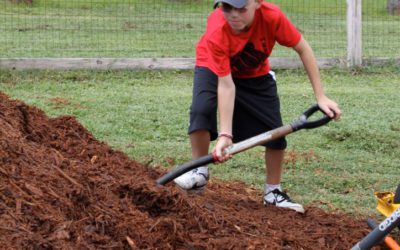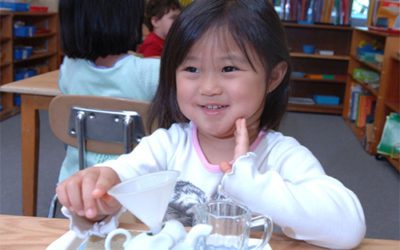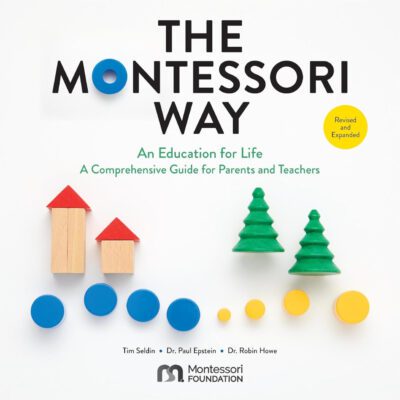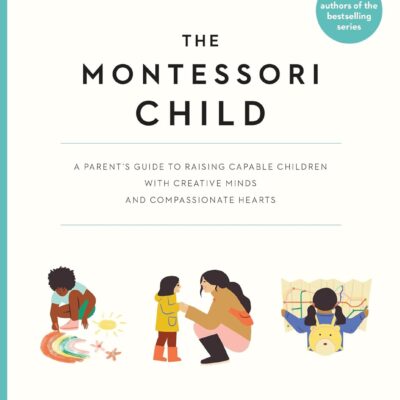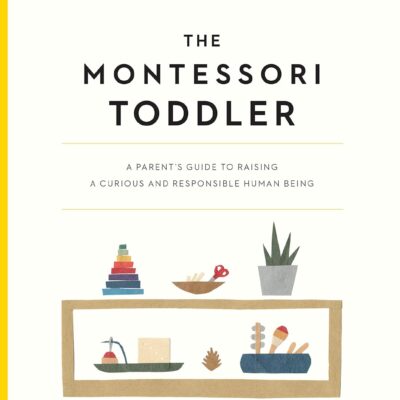“Set the children free, let them have fair play, let them run out when it is raining, take off their shoes when they find pools of water, and when the grass of the meadows is damp with dew, let them run about with bare feet and trample on it; let them rest quietly when the tree invites them to sleep in its shade; let them shout and laugh when the tree invites them to sleep in its shade; let them shout and laugh when the sun wakes them up in the morning, as it wakes up every other living creature, which divides its day between waking and sleeping,” (Montessori, 1997, p. 71)
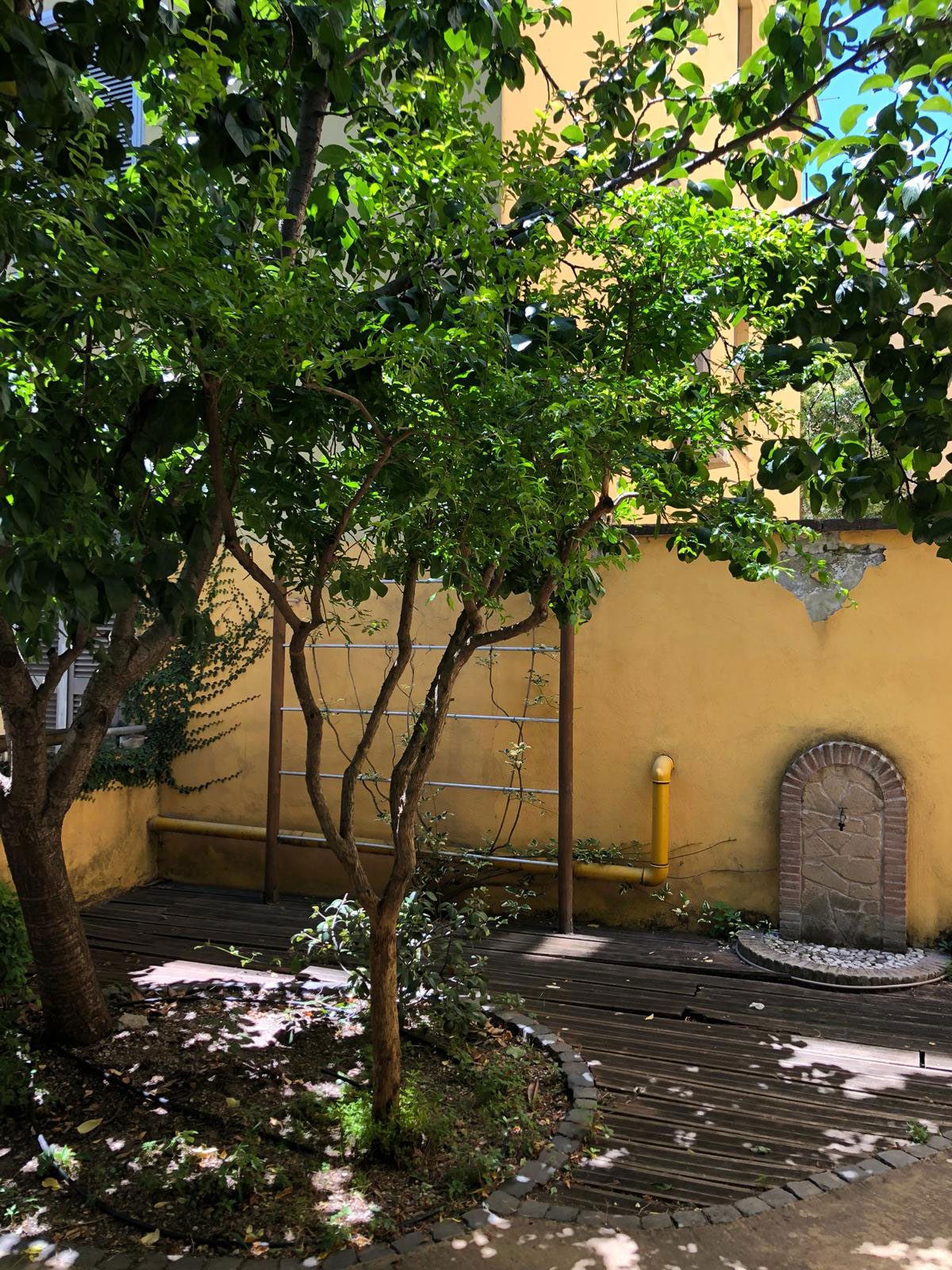 Children are inherently connected to nature and fascinated by living things. Due to a variety of factors, including increased academic pressures in schools, over-scheduling of extracurricular activities, increased reliance on technology for entertainment, and fear of children being left alone outdoors, children are spending more time indoors than ever before. Connection to nature, however, is an integral part of the Montessori philosophy and methodology. The Montessori Method stresses that immersion in nature is imperative for proper physical and psychological development. Today’s outdoor classrooms are not a new concept in Montessori schools. Maria Montessori wrote:
Children are inherently connected to nature and fascinated by living things. Due to a variety of factors, including increased academic pressures in schools, over-scheduling of extracurricular activities, increased reliance on technology for entertainment, and fear of children being left alone outdoors, children are spending more time indoors than ever before. Connection to nature, however, is an integral part of the Montessori philosophy and methodology. The Montessori Method stresses that immersion in nature is imperative for proper physical and psychological development. Today’s outdoor classrooms are not a new concept in Montessori schools. Maria Montessori wrote:
“In the first ‘Children’s House’ in Rome, we have a vast courtyard, cultivated as a garden, where the children are free to run in the open air…which is planted on one side with trees and a branching path in the middle, and on the opposite side, has broken ground for the cultivation of plants. This last, we have divided into so many portions, reserving one for each child…While the smaller children run freely up and down the path, or rest in the shade, the possessors of the earth (children from 4 years up) are sowing or hoeing, watering or examining the surface of the soil watching for the sprouting plants.”
Maria Montessori believed that the outdoors is a natural extension of the classroom and, hence, there should be harmony between the indoor and outdoor learning environments. She wrote:
“There must be provision for the child to have contact with nature; to understand and appreciate the order, the harmony, and the beauty in nature. It is also necessary for his psychical development to place the soul of the child in contact with creation, in order that he may lay up for himself treasure from the directly educating forces of living nature.” (1966)
She was a real advocate for the outdoor classroom and placed a great deal of emphasis on getting the children outdoors and connecting with nature.
There must be provision for the child to have contact with nature; to understand and appreciate the order, the harmony, and the beauty
in nature.” —Maria Montessori
I have fond memories of my own childhood growing up in nature. When I shut my eyes, I am easily transported back to that world. We had everything we needed and more! The river ran behind our home, and the banks provided us with rich clay for everything our imagination conjured up. Oh the mud pies we made and the tea parties we hosted underneath the gigantic, old trees. What fun! There was no lack of ideas to play, as we ran freely in the open, often in the rain, hiding behind trees, swinging from its branches, and digging to find the other end of the earth. It is no wonder then that, even now, it is to nature that I turn when I am in need of comfort and solace. I took my childhood for granted, thinking everyone had the same. It was only when I moved away that I realized how special it was and how privileged we were.
Maria Montessori once said, “The land is where our roots are. The children must be taught to feel and live in harmony with the earth.” (Gilder, 2009, p. 35) Today’s disconnection of the children from the natural world bothered me. My goal in opening an outdoor classroom at my school was to provide regular access to the outdoors, along with guided Montessori classroom work, in order to connect them back to nature. Richard Louv reminds us about the drastic need to bring children into contact with nature as he describes a haunting vision of children without access to nature suffering from nature-deficit disorder. He writes, “When children have regular contact with nature, in an unstructured way, they are more attentive, observant, creative, and self-content.” (Louv, 2008, p. 49)
In creating the prepared environment for the outdoor classroom, we followed the same meticulous principles as for the indoor classroom. The tenets of Montessori philosophy and methodology are the same:
- Child centered
- Well ordered and structured
- Beautiful
- Freedom within limits
- Intrinsic motivation
- Teacher as Guide and observer of the child
Young children thrive and their minds and bodies develop best when they have free access to stimulating outdoor environments for learning. Knowledgeable and enthusiastic adults are crucial to unlocking the potential of the outdoors. In creating the outdoor classroom, the intention is for the young child to learn the skills of social interaction, care for living things and the environment, curiosity, wonder, and joy.
The foundation of the Montessori environment is Practical Life, and this is easily done outdoors. Children learn to maintain their own place, just as they do indoors.
They take care of the plants and harvest vegetables and fruits. They learn to compost and to conserve water with the rain barrel. “Through outdoor education, children learn to take greater care of the environment, each other, and themselves. To gain self-confidence, children need to love nature and feel a sense of belonging in nature—a connection.” (Gilder, 2009, p.36)
Living things fascinate children. “It has been understood…that the best means of invigorating the child is to immerse him in nature” (The Montessori Method). Observing birds at the bird-feeding station teaches them so much about the natural environment. They take on the responsibility of filling the bird feeder and keeping the birdbath full of water. Binoculars come in handy as they look for birds in the trees. The curiosity regarding the birds they see can follow them into the classroom, where they learn the names of the birds as well as the parts of a bird. Similarly, butterfly observations can instill an interest in the life cycle of a butterfly, and they can watch the metamorphosis of a butterfly.
It is important to allow children to draw, record, or document their nature experiences or observations. Nature collages, leaf rubbings, and petal paintings make art come alive in the outdoor classroom. Given opportunities to discover nature, children not only experience the natural world to its fullest extent, they use those experiences to form important and lasting attitudes toward nature. Louv tells us that we can now assume that, just as children need good nutrition and adequate sleep, they may very well need contact with nature. “Healing the broken bond between our young and nature is in our self-interest…because our mental, physical, and spiritual health depends upon it” (Louv, p.3)
A Montessori primary environment is the perfect place to integrate nature exploration. The Montessori philosophy and Method emphasizes connecting to nature and inspiring wonder in children. Many of the classroom materials support nature discovery and research for connecting the outdoor and indoor environments, especially in the areas of natural history, geography, botany, and zoology. Maria Montessori stressed that immersion in nature is imperative for proper physical and psychological development and stated,
“When the child goes out, it is the world itself that offers itself to him. Let us take the child out to show him real things instead of making objects which represent ideas and closing them in cupboards…There is no description, no image in any book that is capable of replacing the sight of real trees and all the life to be found around them, in a real forest. Something emanates from those trees which speaks to the soul, something no book, no museum is capable of giving. The wood reveals that it is not only the trees that exist, but a whole, interrelated collection of lives. And this earth, this climate, this cosmic power are necessary for the development of these lives. The myriad of lives around the trees, the majesty, the variety are things one must hunt for, and which no one can bring into the school. How often is the soul of man—especially that of the child—deprived because one does not put him in contact with nature?”
The outdoor classroom provides children the opportunity to be outside, except on very cold days. The lessons build on what is learned in the indoor classroom—refinement of movement, sensory development, social skills, and care of the environment. They learn to become responsible citizens of our planet. These lessons lay the foundation for a lifetime love of nature, gardening, art, and science—and for me, most importantly, to be responsible global citizens. ¢
Bibliography
Gilder, S.A. (2009). Montessori by Nature. Montessori Life, 21 (4), 34-37.
Louv, R. (2008). Last child in the woods: saving our children from nature-deficit disorder. Chapel Hill, NC: Algonquin Books of Chapel Hill
Montessori, M. (1967). The discovery of the child. New York, NY: Ballantine. (Original work published 1948).
Montessori, M. (1994). From childhood to adolescence. Oxford, England: Clio Press.
Montessori, M. (1972). Peace and education. Madras: Kalakshetra Press.
Tomorrow’s Child / October 2019 / Pg 10

